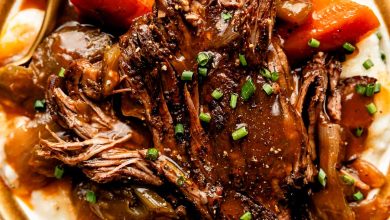Unlock the Flavor: Nutritional Benefits and Culinary Uses of Ground Sage
Sage Ground: Nutritional Information and Ingredient Details
Sage, a fragrant herb known for its distinctive flavor and aromatic qualities, is a versatile ingredient that elevates a variety of dishes, from savory to sweet. Ground sage is particularly convenient for incorporation into recipes, allowing for an even distribution of its unique taste and health benefits.
Nutritional Profile
The following table outlines the comprehensive nutritional information for ground sage per 100 grams:
| Nutrient | Amount |
|---|---|
| Energy | 315.0 kcal |
| Protein | 10.63 g |
| Total Fat | 12.75 g |
| – Saturated Fat | 7.03 g |
| Carbohydrates | 60.73 g |
| – Sugars | 1.71 g |
| Fiber | 40.3 g |
| Calcium | 1652.0 mg |
| Iron | 28.12 mg |
| Magnesium | 428 mg |
| Phosphorus | 91.0 mg |
| Potassium | 1070.0 mg |
| Sodium | 11.0 mg |
| Zinc | 4.7 mg |
| Copper | 0.757 mcg |
| Manganese | 3.133 mg |
| Selenium | 3.7 mcg |
| Vitamin C | 32.4 mg |
| Thiamin (B1) | 0.754 mg |
| Riboflavin (B2) | 0.336 mg |
| Niacin (B3) | 5.72 mg |
| Vitamin B6 | 2.69 mg |
| Folate | 274.0 mcg |
| Vitamin B12 | 0.0 mcg |
| Vitamin A | 295.0 mcg |
| Vitamin E | 7.48 mg |
| Vitamin D2 | 0.0 mcg |
Allergen Information
Sage is a plant-derived ingredient and is generally considered safe for most individuals; however, those with specific allergies to plants in the Lamiaceae family (which includes mint, basil, and oregano) should exercise caution. Always consult with a healthcare provider if you have concerns regarding allergies or intolerances.
Dietary Preferences
Ground sage is suitable for various dietary preferences, including vegetarian and vegan diets, as well as gluten-free and paleo lifestyles. Its low sugar content makes it an excellent seasoning option for those managing their carbohydrate intake or following a low-sugar diet. Additionally, the high fiber content of sage contributes to digestive health and helps maintain a feeling of fullness, making it a valuable addition to weight management plans.
Culinary Advice
When incorporating ground sage into your cooking, remember that its robust flavor can be quite potent, so it’s best used in moderation. It’s a wonderful complement to roasted meats, hearty stews, and savory bread recipes. Additionally, sage pairs beautifully with dishes that feature butternut squash, potatoes, and beans. To maximize its flavor potential, consider adding ground sage towards the end of the cooking process to maintain its aromatic qualities. You can also infuse oils or vinegars with sage for an elevated flavor profile in dressings and marinades.
Conclusion
Ground sage is not only a flavorful addition to your culinary repertoire but also a powerhouse of nutrients that can contribute positively to your health. Whether you’re seasoned in the kitchen or just starting your culinary journey, incorporating ground sage can enhance your dishes while providing a range of health benefits. Embrace this herb in your cooking and discover the delightful depth it brings to your meals!








